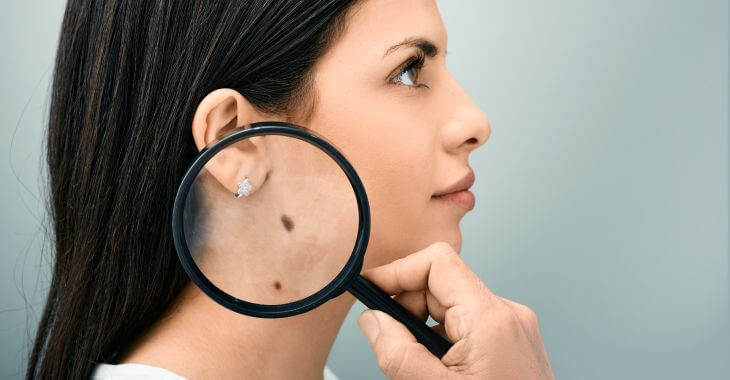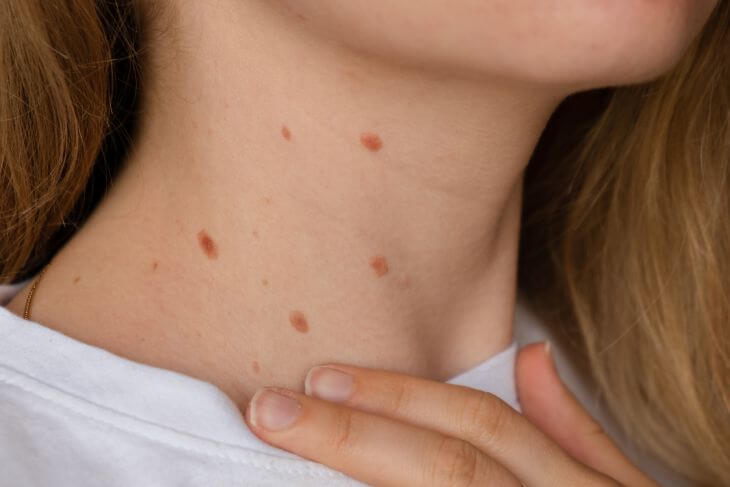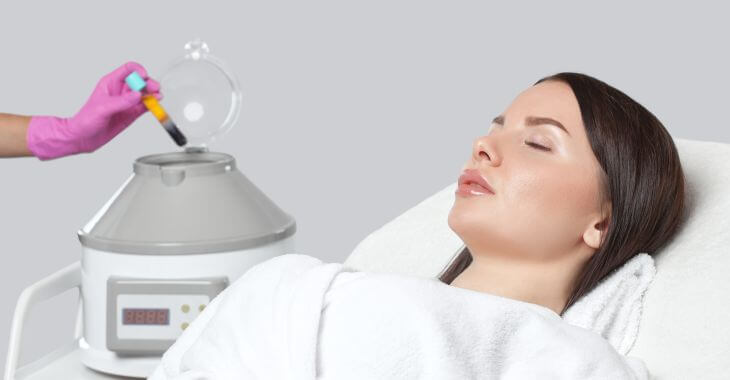Birthmark vs Mole: Do You Know the Difference?

Birthmarks and moles are common skin markings that many people have. While they appear similar, they are distinct in their characteristics and potential health implications. Do you know the difference between a mole and a birthmark? Here is what you need to know about birthmark vs. mole differences.
What Are Birthmarks?
Birthmarks are skin irregularities that are present at or shortly after birth. They can take on various appearances and may be flat or raised, pink, red, brown, or even bluish in color. Birthmarks can occur anywhere on the body and come in different types. The most common types of birthmarks include:
- Salmon Patches (Stork Bites): These are pale pink or red patches that appear on a baby’s face or neck. They usually fade with time and are not a cause for concern.
- Hemangiomas: These are raised, red, rubbery bumps that often appear within a few weeks of birth. While most hemangiomas eventually shrink and disappear, some may require medical treatment if they affect vital structures like the eyes or airway.
- Café-au-lait Spots: These are light brown spots that are typically oval in shape. They can vary in size and might fade somewhat as a person ages, but they often persist into adulthood.
- Port-Wine Stains: These are large, flat, and red or purple marks that are often present at birth. Port-wine stains do not fade on their own and might require laser therapy for treatment.
- Mongolian Spots: These are flat, bluish-gray patches that appear on the lower back or buttocks, most commonly in people with darker skin tones. They usually fade with age.
Birthmarks are generally harmless, though some types may be associated with underlying medical conditions. Most birthmarks do not require treatment unless they cause discomfort or are of cosmetic concern.
What Are Moles?
Moles, on the other hand, are a completely different type of skin marking. When considering mole vs birthmark, moles are usually small, pigmented spots that can be brown, black, or skin-colored. Moles can appear at any age and are the result of a cluster of pigmented cells known as melanocytes.
Here is the difference between mole and birthmark:
- Appearance: Moles are typically small and round, while birthmarks can come in a variety of shapes, sizes, and colors.
- Development: Moles can appear at any time in life, while birthmarks are typically present at birth or emerge shortly afterward.
- Composition: Moles are composed of melanocytes, which are responsible for producing pigment (melanin). Birthmarks, on the other hand, can consist of various cell types and may not always contain melanocytes.
- Evolution: Moles can change over time. They may darken, lighten, grow in size, or develop irregular borders. Changes in moles should be monitored, as they can be a sign of skin cancer.
Both birthmarks and moles are distinct skin markings with different characteristics and causes. Birthmarks are generally present at or shortly after birth and can take various forms, while moles are pigmented spots that can appear at any time in life.
Skin Cancer Risk
One crucial aspect to consider when discussing moles is their potential connection to skin cancer. While the vast majority of moles are harmless, some may carry an increased risk of developing melanoma, a type of skin cancer. To assess your moles for potential cancer risk, use the ABCDE rule:
- Asymmetry: Moles that are not symmetrically round or oval should be examined.
- Border: Moles with irregular, blurred, or jagged borders are cause for concern.
- Color: Moles that have multiple colors or that have changed in color should be checked.
- Diameter: Moles larger than a pencil eraser (6 mm) may be worrisome.
- Evolution: Any changes in size, shape, color, or symptoms (such as itching, bleeding, or pain) should be assessed by a dermatologist.
It is essential to be proactive in monitoring your moles for any signs of skin cancer. Regular skin self-examinations and professional dermatological evaluations can help identify potential issues early, leading to better outcomes in the event of skin cancer.
When to Seek Medical Advice
While most birthmarks and moles are harmless, there are some instances when you should seek medical advice.
- If a birthmark appears to be growing rapidly or changes in color, shape, or texture, it’s a good idea to have it examined by a healthcare professional.
- If a birthmark is causing pain, discomfort, or emotional distress, you may want to consult a dermatologist.
- Some types of birthmarks, like port-wine stains, can be effectively treated with laser therapy. Discuss treatment options with a dermatologist if you are concerned about a particular birthmark’s appearance.
- Any changes in a mole’s size, shape, color, or symptoms should be promptly evaluated by a dermatologist.
- If you notice a new mole in adulthood, especially if it appears atypical or unusual in any way, it’s advisable to have it checked.
- If you have numerous moles or a family history of melanoma, regular skin checks with a dermatologist are recommended to monitor for potential skin cancer.

Most birthmarks and moles are harmless, but it’s essential to monitor moles for any signs of skin cancer and seek medical advice when necessary. If you have concerns about a birthmark or mole, consulting a dermatologist is the best course of action to ensure your skin’s health and well-being.
The information provided on this website, including text, graphics, images, and other materials, is intended solely for informational purposes and should not be used as a substitute for professional medical advice, diagnosis, or treatment.




)